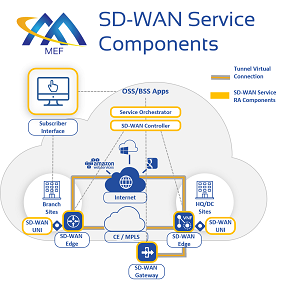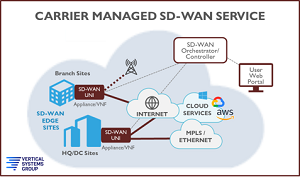News
Research Shows Industry Still Struggling to Define SD-WAN
Software-Defined Wide-Area Networking (SD-WANs) is arguably the hottest topic in the software-centric enterprise networking transformation, but recent research shows the industry is still struggling to define the wide-ranging space.
The research comes from Vertical Systems Group, out with new data on carrier-managed SD-WAN services that "address the rapidly changing networking requirements of enterprise and large business customers worldwide."
In an attempt to bring some order to the growing SD-WAN arena for vendors and customers alike, industry association MEF is in the process of defining a standard to "enable a wide range of ecosystem stakeholders to use the same terminology when buying, selling, assessing, deploying, and delivering SD-WAN services."
For its part, MEF says an SD-WAN service is:
An application-aware, policy-driven connectivity service, offered by a Service Provider, that optimizes transport of IP Packets over multiple underlay networks. MEF SD-WAN Services are specified using Service Attributes defined in this MEF Standard.
The group illustrated that in a graphic:
 [Click on image for larger view.] SD-WAN Components (source: MEF).
[Click on image for larger view.] SD-WAN Components (source: MEF).
Vertical Systems Group, meanwhile, published a recent post titled "Managed SD-WAN Services Reality Check" that states:
Defining the Managed SD-WAN Services market is a challenge, due in part to the broad and growing number of vendor-proprietary SD-WAN products and service solutions. Results of the most recent MEF/Vertical survey of Service Providers worldwide measured the extent of this diversity. Delivery of managed SD-WAN services encompasses Hybrid SD-WAN solutions, multiple SD-WAN vendors, OTT solutions -- and more. Additionally, in conjunction with their goals to virtualize and automate all network functions, many network operators are developing their own SDN-based solutions that integrate SD-WAN and other applications.
The firm offered up its own graphic to illustrate the components:
 [Click on image for larger view.] Carrier Managed SD-WAN Service Definition (source: Vertical Systems Group).
[Click on image for larger view.] Carrier Managed SD-WAN Service Definition (source: Vertical Systems Group).
The post, promoting for-pay research, lists characteristics of a service based on SDN architecture, dynamic customer edge site connectivity and centralized network control and visibility.
"Misperceptions about SD-WAN have delayed network purchase decisions and limited market growth," the firm said. "Migration to SD-WAN is a more complex undertaking than has been pitched to date, particularly for larger enterprise and global networks. It requires managing a customer's digital transformation, providing education about SD-WAN alternatives, setting customer expectations, and delivering a quality customer experience.
"The reality is that it takes lots of experience and skilled resources to sell, deploy and manage SD-WAN networks with application and network visibility end-to-end." See more here.
About the Author
David Ramel is an editor and writer at Converge 360.